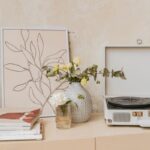Do you believe that different colors, when used in interior design, have effects on us that we are sometimes not aware of?
We do know that certain colors soothe while others provoke aggressive emotions in us. However, the psychology of color for interior design has only been recently introduced and applied in business, advertising, and personal home design.
In business, colors are used to come up with eye-catching logos and advertisements. In the psychology of color for interior design, colors are carefully analyzed to determine which of them increase workers’ productivity and which ones tend to have a detrimental effect to production.
The psychology of color for interior design is also used for restaurants, salons, hospitals, schools, and – believe it or not – even prison cells! Psychologists know that subtle qualities, such as a room’s color, can have a great impact on its occupants. This is why the psychology of color for interior design should not be taken for granted.
They say that the color red – bold and provocative – awakens the senses, stimulates the appetite, and raises the blood pressure. Restaurateurs take advantage of this concept in the psychology of color for interior design by using colors that would tend to attract customers and keep them coming back for more.
Muted colors such as sky blue, on the other hand, evoke feelings of calmness and peace. Researchers studying the psychology of color for interior design several years ago have even gone to the extent of painting prison cells blue to alter a person’s moods and temperaments.
In consideration of residences, the psychology of color for interior design is used to determine [http://www.1interiordesign.com/Interior_Design_Bathrooms/] which colors to use depending on the homeowner’s needs and objectives. For instance, a person who wants his bedroom to become a sort of haven or refuge after a hard day’s work would appreciate cool and calming colors such as celadon or sky blue.
Different Colors For Different Tastes
The wonderful thing about planning your own room design is being able to choose your own colors. The psychology of color for interior design also depends on the how colors have been used in the past and the person’s knowledge of these facts.
Dark green, for example, is associated with money and is the color of choice for offices, dens, and game rooms. Dark purple, on the other hand, is the color of royalty. Those who are believers of the psychology of color for interior design know that the interiors of a room play a large part in shaping a person’s lifestyle and behavior.
Lavender is a is preferred by tweeners because of its cool aura. You could also complement the room’s color by using scented candles that match the room’s dominant shade – in this case, you could use lavender-scented aromatherapy candles to establish a prevalent theme.
In the psychology of color for interior design, gray is known to be a color that is anti-productive. It tends to make a person withdraw instead of move forward and is therefore not recommended for use in offices where action and a lot of energy is desired.
Black is too strong for stand-alone use and is thus only appropriate for accents, according to the psychology of color for interior design. Yellow, too, should be used with caution as it tends to provoke different feelings in various individuals.
Although yellow is used to bring in a bit of sunshine into children’s rooms or kitchens, the psychology of color for interior design has also found that it may tend to make people give in to anger quickly.






